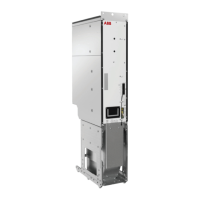Fault tracing
Contents of this chapter
This chapter describes the fault tracing of the brake unit.
Fault indications
A fault in the resistor brake circuit prevents fast motor deceleration and can cause the drive
to trip on a fault.
If a fault is detected by the chopper control unit, the brake chopper disconnects the brake
resistor from the intermediate circuit, and the chopper fault indication relay output is
de-energized.
Depending on the application, the relay output either opens the drive main contactor/breaker
or gives a fault indication to the overriding control system. See the circuit diagrams delivered
with the unit.
What to doCauseFault indication/Fault
Let equipment cool.Chopper or resistor overheated.Fault indication relay output
switches off the main power
or gives a fault indication to
an overriding control system.
Check temperature sensor connections
both at the brake control unit end, and
at the temperature sensor end.
Digital input for the temperature fault
is at value 0 = overtemperature, al-
though there is no overtemperature.
Check sensor. Replace faulty sensor.
Check power cables and resistor.Short circuit in resistor or power cables.
Contact local ABB representative.Chopper control board failure. Chopper
damaged; it is not able to disconnect
resistor from intermediate circuit.
Check voltage setting.Chopper voltage setting too high.Chopper does not function.
Check parameters of all inverters.Inverter overvoltage control is on.
10
Fault tracing 71

